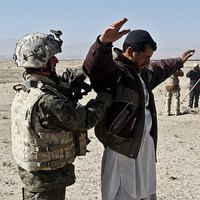Last week, while in Poland to deliver a series of lectures on defense issues, I traveled by train from Warsaw to Krakow and was reminded why Norman Davies titled his magisterial history of the country, “God’s Playground.” Aside from the Great Plains of North America, one would be hard-pressed to find terrain better suited to armored and cavalry warfare -- and more inviting to invaders on all sides.
So it was no surprise that during my visit, many of the questions I heard from Poles concerned the health and future of the NATO alliance. Americans are fortunate enough to no longer really need NATO. Speak to a U.S. military officer or diplomat these days, and they will refer to NATO as if it is a collection of far-off allies, one that the United States is no longer really a part of.
That’s not the case for the Poles. At the National Defense University of Warsaw, the NATO flag is proudly displayed next to the national colors, as are the NATO pins on Polish officers’ uniforms. Poland is still counting on NATO. Having spent the Cold War oriented to warding off threats from the west, with its armor units concentrated in Silesia, Poland now looks east with the wariness of a nation that experienced Russian aggression all too often in the 20th century. After being stopped on the banks of the Vistula in 1920, the Soviets conspired to massacre Polish officers and intelligentsia during World War II, and then sat on the outskirts of Warsaw in 1944 as German forces reduced the city to rubble.

